#billy boyle
Explore tagged Tumblr posts
Text

DOROTHY L SAYERS AND THE THIRTY-FOOT DRAIN: SEARCHING FOR PETER WIMSEY
James R. Benn goes on a quest to discover the original inspiration for Sayers' iconic war-weary character.
SEPTEMBER 6, 2023 BY JAMES R. BENN
VIA SOHO
Dorothy L Sayers was my gateway author to the world of crime fiction. I’d read the Sherlock Holmes stories earlier on, but that superlatively singular creation of Arthur Conan Doyle did not lead me any further. Holmes was unique, existing in his own universe, and there he remained. Not so with Sayers and Lord Peter Wimsey. The Wimsey family motto is “As my Whimsy takes me,” and Sayers’ whimsy took me right through her books and then onto Agatha Christie, Margery Allingham, Josephine Tey, and other authors writing in that great tradition.

My Billy Boyle World War II mystery novels are often set in Great Britian, but it is not the Great Britian of the Golden Age of crime fiction. That Golden Age held sway in the interwar years, 1920 – 1939. But even then, characters like Lord Peter and Harriet Vane represented the values and way of life already shattered by the experience of the Great War. Wimsey has his roots firmly in the nineteenth century. He is graceful upon the page, but it is a grace disguising the transcendental impact of the horror in the trenches and the dreadful thinning of the population of men in so many towns and villages across the country. This is exemplified by Lord Peter’s shellshock, on full display in the first book in the series, Whose Body? where we find him firmly in the grip of vivid nightmares. His world has changed, and all the fine manners and proper deportment he can summon will never bring back the bright, golden days before 1914. In one of her short stories, Sayers has Wimsey declare his own epitaph: “Here lies an anachronism in the vague expectation of eternity.”
Even given this divide between the universe of Lord Peter Wimsey as created by Sayers and the mid-1940s of Billy Boyle and the Second World War, I’d never given up on the notion of finding some sort of intersection between these two worlds. If not a direct connection, then one at least fueled by elements common to both. A homage that, perhaps, only I would recognize.
As I developed the plot for the eighteenth novel in my series, I decided it was time for a change of pace. This entry would be removed from the battlefield and the more exotic locales of the recent books. Since Billy Boyle and friends had never enjoyed any time off, I was overdue to grant them leave. This takes place in the quiet (fictional) village of Slewford in Norfolk, at Seaton Manor, the home of Sir Richard Seaton, father to Billy’s lover, the English spy Diana Seaton.
I had to revisit the first book in the series, Billy Boyle, to see where I had originally placed Seaton Manor. For no special reason, I had selected the county of Norfolk, on the east coast of England. Seaton Manor sits near the Wash, a bay and estuary marking a large indentation on the coastline. Tidal forces and shifting sands make the Wash treacherous for those who are unprepared for how fast and swift the tide can come in.

As I studied the countryside around the Wash, it seemed oddly familiar. Then it hit me. This is the Fens, or Fenland, the setting for one of Dorothy L Sayers’ finest works—The Nine Tailors. Her fictional village of Fenchurch Saint Paul is located in Cambridgeshire, just over the border from Norfolk and close to the edge of the Wash. The Fens, a huge expanse of reeds and shallow, freshwater lakes, borders the Wash. Beginning in the seventeenth century, landowners began to drain the Fens in order to turn it into fertile farmland. By Lord Peter’s time, long drainage ditches drew water away from the fields and into the Wash. At the beginning of The Nine Tailors, such a ditch—known as the Thirty-Foot Drain—is exactly where we find Lord Peter Wimsey and his sturdy manservant Bunter.
“That’s torn it!” said Lord Peter Wimsey.
The car lay, helpless and ridiculous, her nose deep in the ditch, her back wheels cocked absurdly up on the bank, as though she were doing her best to bolt to earth, and were scraping herself a burrow beneath the drifted snow . . . right and left, before and behind, the fen lay shrouded. It was past four o’clock and New Year’s Eve; the snow that had fallen all day gave back a glimmering greyness to a sky like lead.
Now I had an intersection. My story of interrupted leave at Seaton Manor also hinged upon treacherous waters. My (first) murder victim was also found in a totally unexpected location, as was the dead gent in The Nine Tailors. Also, I was but a short distance not only from the setting of The Nine Tailors but the home turf of Dorothy L Sayers herself.
Sayers grew up in Bluntisham, Cambridgeshire, right on the edge of the Fens. From 1917 to 1928, her father was the rector at Christchurch, a tiny Fenland village with a notable Victorian church. Here, she would have become familiar with bell ringing, which forms such an important part of the plot for The Nine Tailors. She also would have understood the danger to people living in the Fens from the power of water and tides. The area is kept dry by a series of sluices and floodgates which, on the occasion of heavy rains and high tide, can overflow and wreak havoc.
I already had my own story to tell about treacherous waters and shifting tides. I’d long been fascinated by the Maid of Harlech, which is how locals in Wales refer to an American P-38 Lightning fighter plane that crash-landed just off the coast in 1942. It was only in 2007 that shifting sands and changing tides revealed it, half-buried in the mud. But the sea routinely reclaims it, only to have it appear months later.

With Seaton Manor already established on the east coast, using the Maid of Harlech was out. But I did construct a plot about a German bomber that crash-landed in Norfolk and skidded off a cliff into the Wash, only to have the intense tides reveal it two years later, during Billy’s leave, along with its mysterious cargo. Just as the Thirty-Foot Drain played a key role in The Nine Tailors, so do the tides in Proud Sorrows. I could not resist inserting mention of that drain in reference to a local man brought in to hoist the wreckage out of the water. He comes to the task fresh from dredging the Thirty-Foot Drain.

So, I had my intersection with Dorothy L Sayers. Thin, but enough for me. The Fens, the Wash, high waters, and a dead body in the same general vicinity as the corpse in The Nine Tailors. Subtle, but satisfying. What more could I ask for?
As it happens, one Ian Carmichael. My research turned up the fact that the actor who would portray Lord Peter Wimsey on the BBC from 1972 to 1975 had been an officer in the Royal Armoured Corps during WWII. Carmichael served with the 22nd Dragoons, landing on Juno Beach on D-Day and serving in battles across France, Holland, and Germany.

The 22nd Dragoons was no ordinary unit. They were equipped with specialized Sherman Crab flail tanks. These tanks were modified with heavy chains ending in fist-size steel balls, or flails, attached to a horizontal rotating rotor mounted on two arms in front of the vehicle. They would clear a path through a minefield by slowly driving and flogging the ground ahead of them, exploding the mines. To be effective, the tanks had to drive at no more than one and a half miles per hour, often in the face of enemy fire. That was how Captain Ian Carmichael spent his war.

With that intriguing bit of history tucked up my sleeve, I bring Carmichael onstage. Since the village of Slewford played host to an exclusive POW compound for high-ranking German officers, Captain Carmichael is brought in from the Continent to interrogate a prisoner about German defenses the Dragoons is facing in Holland. He encounters Billy and assists with his investigation, providing yet another Lord Peter intersection.
It would be thirty more years before Carmichael would play Lord Peter, on both radio and television programs. But in 1944, he was close to the age Wimsey is at the time of the novels. I had to work at not letting him slip into the aristocratic patter of Lord Peter, reminding myself that Carmichael was an aspiring actor from northern England, the son of an optician, not the Duke of Denver.

For those fans of Dorothy L Sayers who prefer Edward Petherbridge as their Wimsey (he starred in several BBC productions during the 1980s), I can only report that he was a mere eight years old in 1944, far too young to have any role in investigating the murders in Slewford.
***
James R. Benn
James R. Benn is the author of the Billy Boyle mystery series, set during the Second World War. He has been nominated for the Dilys, Sue Feder Historical Mystery, and Barry awards, long-listed for the 2015 Dublin IMPAC Literary Award, and was awarded the 2018 Al Blanchard Short Story Award. His forthcoming book, Road of Bones, is the 16th in the Billy Boyle series.
Dorothy L. Sayers and the Thirty-Foot Drain: Searching for Lord Peter Wimsey
#james r. benn#billy boyle#lord peter wimsey#dorothy l. sayers#world war ii mystery novel#i haven't read the billy boyle books yet but do have the first two#and plan to remedy that soon#it will be awhile before i get to this one#but i like the sound of it
1 note
·
View note
Text


Twin Peaks (1990-2017)
#t shirt#movie#twin peaks#agent cooper#Kyle MacLachlan#dale cooper#david lynch#Sherilyn Fenn#audrey horne#Lara Flynn Boyle#donna hayward#Mädchen Amick#shelly johnson#David Duchovny#Michael Ontkean#Peggy Lipton#Sheryl Lee#sheryl lee ralph#laura palmer#Dana Ashbrook#bobby briggs#Piper Laurie#Michael J. Anderson#Ray Wise#James Marshall#Heather Graham#Billy Zane#Kimmy Robertson#Mary Jo Deschanel#Frank Silva
4K notes
·
View notes
Text

some 1980s & 90s audition polaroids of celebs, when they were much younger and (mostly) undiscovered
#actors#Hollywood#1990s#80s auditions#Ben Stiller#Cameron Diaz#Drew Barrymore#Christina Ricci#Elijah Wood#Benicio Del Toro#Juliette Lewis#Vince Vaughn#Jason Priestley#Woody Harrelson#Billy Bom Thornton#Lara Flynn Boyle#vintage
347 notes
·
View notes
Text
Anytime Mr Harrington comes in with a snotty opinion on Billy’s relationship with Steve (because he wasn’t “brought up right”) and then tries to “educate” him on things young men should do, Billy responds with “sorry I don’t play golf because I’m not trapped in a loveless marriage”
#billy hargrove#steve harrington#harringrove#incorrect harringrove quotes#god bless frankie boyle for that amazing quote
149 notes
·
View notes
Text

Audition Polaroids taken by casting director Mali Finn, 1985-1995
#retro#actors#Ben Stiller#Cameron Diaz#Drew Barrymore#Christina Ricci#Elijah Wood#Benicio Del Toro#Juliette Lewis#Vince Vaughn#Jason Priestley#Woody Harrelson#Billy Bob Thornton#Lara Flynn Boyle
924 notes
·
View notes
Text

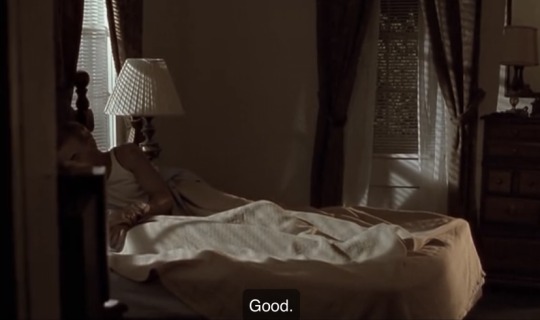
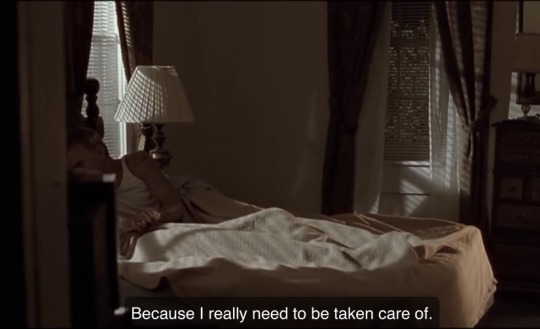
Monster’s Ball (2001)
#monster’s ball#monster's ball#halle berry#billy bob thornton#heath ledger#peter boyle#film#movie#2000s#00s#marc forster#mos def
701 notes
·
View notes
Text
if i think about dishonored women too hard my stomach hurts
#dishonored#dishonored 2#emily kaldwin#alexandria hypatia#billie lurk#lady boyle#vera moray#granny rags#jessamine kaldwin#oh mygod im gonna start crying i miss jessamine so bad
53 notes
·
View notes
Text

チョコレート 東宝(株)出版・商品事業室 監督:マーク・フォースター/出演:ハル・ベリー、ビリー・ボブ・ソーントン、ヒース・レジャー、ピーター・ボイル、ショーン・コムズ、モス・デフ ほか
#monster's ball#チョコレート#marc forster#halle berry#ハル・ベリー#billy bob thornton#ビリー・ボブ・ソーントン#heath ledger#peter boyle#sean combs#mos def#anamon#古本屋あなもん#あなもん#映画パンフレット#movie pamphlet
3 notes
·
View notes
Text
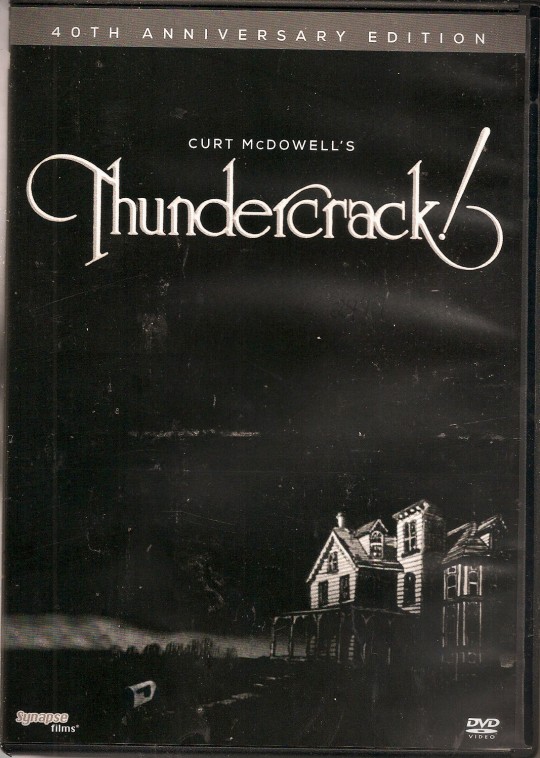
Bad movie I have Thundercrack 1975
#Thundercrack#Marion Eaton#George Kuchar#Melinda McDowell#Phillip Heffernan#Moira Benson#Rick Johnson#Maggie Pyle#Ken Scudder#Meg Levison#Bernie Boyle#Mark Ellinger#Virginia Giritlian#Michelle Gross#Laurie Hendricks#Billy Paradise#John Thomas#Gael Sikula#Margo O'Connor#Roy Ramsing#Curt McDowell
5 notes
·
View notes
Text
Biliyorum
Biliyorum anlamlıydı
Anlamsız olmalıydı
Sesimdeki notalar seni haykırırken; karanlığa
Utandığın için mi susardın?
Yoksa sustuğun için mi utandırdın?
#love quotes#makeup#baby animals#cats#cute#suzuka gozen#black love#aşk sevgi#bu kalp seni unutur mu#sevmek#bilmiyorsun#bilmiyorum#sevseydi gitmezdi#zuzu boyle#hermann goering#billie eilish#ufuk beydemir#sevgili
1 note
·
View note
Text

Twin Peaks (1990-2017)
#long sleeves#long sleeved t shirt#twin peaks#david lynch#red#agent cooper#Kyle MacLachlan#dale cooper#Sherilyn Fenn#audrey horne#Lara Flynn Boyle#donna hayward#Mädchen Amick#shelly johnson#David Duchovny#Michael Ontkean#Peggy Lipton#Sheryl Lee#sheryl lee ralph#laura palmer#Dana Ashbrook#bobby briggs#Piper Laurie#Michael J. Anderson#Ray Wise#James Marshall#Heather Graham#Billy Zane#Kimmy Robertson#Mary Jo Deschanel
49 notes
·
View notes
Text
The Calcium Kid (2004)

The Calcium Kid has a couple of funny moments. It’s amusing to see big stars like Orlando Bloom and Michael Peña in a relatively recent movie you’ve never heard of. After you’ve gotten over that novelty, the best way to describe it is “unremarkable”. You’re going to forget this movie down the line because the whole mockumentary thing has been done better before, and since.
The fight of the century is scheduled between Pete Wright (Tamer Hassan) and middleweight champion of the world Jose Mendez (Peña). An American camera crew (led by Sebastian Gore-Brown) is determined to record all the behind-the-scenes drama. When Wright breaks his hand while sparring with Jimmy Connelly (Bloom), a gentle, good-natured milkman, the fight SHOULD be called off but Wright’s unscrupulous promoter, Herbie Bush (Omid Djalili), has a different idea.
While the film is not all that memorable, there is one thing about it that you will treasure. Throughout, Jimmy recalls several nuggets of advice given to him by his father and they’re hilarious. “There’s normally a winner in a two-horse race”, “Without family, man is alone”, “Nothing is out of reach if you’ve got long arms” and the rest are such useless mantras you kind of wish you could memorize them. Certain developments in the story make for big laughs - like when Bush’s attempts to promote Jimmy accidentally associate him with Neo-Nazis. Others fall down face-first and just lie there - like the gags around Jimmy’s mother.
The Calcium Kid isn’t directly parodying Rocky but obviously, the filmmakers have seen the boxing classic so they make good use of the similar set-up… most of the time. It all comes down to the ending and unfortunately, it’s a big letdown. Maybe budgetary constraints stopped them from delivering the kind of fight we wanted but it’s not a very satisfactory conclusion and despite my affection for the picture as a whole, that ending is why I can only give this film by Alex De Rakoff a middle-of-the-road rating.
Watching The Calcium Kid at home, for the price of a rental is the way to go. You can rewind the film and replay the choice bits to memorize them. When the bad jokes rear their ugly heads, groaning out loud will be enough relief for you to get through them. This mockumentary has enough laughs that I’d encourage you to check it out. Maybe it’ll be your kind of thing. (January 10, 2020)

#The Calcium Kid#movies#films#movie reviews#film reviews#Alex De Rakoff#Derek Boyle#Raymond Friel#Orlando Bloom#Michael Pena#Michael Lerner#Billie Piper#Mark Heap#2004 movies#2004 films
1 note
·
View note
Text
Billie understood his desperation to push her away. The fear, the guilt, the unrelenting force of it all, she understood; but maybe for different reasons. She had done it herself to him after he had found his mom’s, found his family. She pushed, forcing a distance between them because she felt as though she would only be holding him back. Felt that she could only interfere with the life that lay waiting for him. Billie understood the need, but having done it herself, she now understood that no good could ever come from it. She was stubborn, tougher than even she gave herself credit for, but he was her anchor. No matter how hard he could try and push; to force their distance, she would not waver.
Each burdened word pained her just as much as their shared wounds, but she couldn’t accept any truth behind it. She refused. This had to be the beginning of the end – the first real step toward seeing the OEA burn. “No. No you didn’t” an unsteady breath filtered from her lips as she shook her head “you didn’t lose this fight. You made it home. If you lost, you wouldn’t have.” Her stomach knotted at the thought, knowing that retaliation would come from the OEA, but she had to believe that more of them would be ready for that now. “You didn’t back down. You fought and you showed everybody else that we can fight back. That we have to. You did that.”
He continued to push, but she remained unmoving; no matter how viciously her heart twisted in her chest, she would not go. “Briggs” his name fled her lungs upon a uneven whisper, moisture gathering in her eyes as she glanced towards his bloodied torso, before back to his features. She didn’t understand much about the way that a supernatural being could heal themselves, but she feared that he wouldn’t, if he couldn’t let himself. If he was so determined to feel the pain, would he? Each wound, each bruise – every mental scar – if there was no willingness to heal, would his body simply refuse? “Look at me and listen to me” strength flooded her tone, determination etched into her features, “– you do not deserve this.”
As his hand found hers, she used it to gently pull him closer, her body meeting his halfway. She remained careful as she guided his hand to sit against her hip, before wrapping her arm around his shoulders and easing him into a cautious embrace. Holding her breath, she manoeuvred herself delicately to ensure that she didn’t place any pressure against his lacerated torso. Managing to hold him close without adding to his discomfort. “Don’t” she whispered against him, “don’t be sorry – just breathe. Be here, with me. Everything else can wait, just for a minute.” Pleading with him now, she whispered “please, just be here with me.” Billie couldn’t take away his physical pain -- that was all to obvious, instead she could only hope that he would allow her to alleviate some of the mental torment. Her fingers traced soothing patterns against his shoulder, inhaling a slow and steady breath for him to mirror, taking the opportunity to kick off her sneakers as she lifted her head to look at him, “we’ll get cleaned up – you’ll start to heal and we’ll just – take the rest at comes, okay?”
Stepping backwards, she intended to pull him along with her – not really caring that either of them were still clothed as she stepped into she shower, standing outside of the stream of water. "So, you comin' in?" her question came softly, eyes never leaving his.

He didn't feel like a safe place, and for that alone, he wanted to push her away. Especially now, when the world felt so unstable, he felt unstable. Whatever redeeming qualities she saw in him, he struggled to see in himself. In that regard, Nova made sense. I see you now, and I don't like you: that made sense. But I see you and I love you? He wanted to scream, you don't, you don't love me, you can't. And yet she did. She loved him so much, so well, he couldn't actually argue it. And loving her? Now that was easy. It felt imbalanced: that she was so easy to love and he was so hard to love. He wanted to argue, say that was before, that things had changed now, but it felt an insult to what she demanded was true, so he simply muttered, "I remember everything."
He shook his head, almost desperate to refute it all. "I thought it was effortless," he managed to quip despite. It was terrifying to be seen, comforting in ways, but terrifying. One day, it had to end, didn't it? He was destined to lose. As the energy dwindled, the fight went with it, the understanding of why he'd done everything tonight. "I lost the fight, Bill," he murmured, "I slaughtered them. It didn't matter. The ones calling the shots, they were gone, and it didn't matter. I fought for her, but I didn't avenge her. I didn't do shit! I don't even know how many people there were, how much blood this is, and they don't care. It doesn't stop them. It's for nothing, I slaughtered them for nothing...it's what they wanted. I gave them what they fucking wanted. And I can't figure out what the point was..."
The room was still, allowing him to calm again in her presence. The rumble continued downstairs, the noise still reaching him now. He could hear it all: the battle raged on in the aftermath. It never ended. This would never end. He wanted to stay up here forever, be right here with her, but they'd be needed.
He could almost forget all the blood, all he was now, when he looked at her. For the briefest moment in time, they felt normal. It was playful and easy, just a boy and a girl. As simple as that. "Once or twice," he countered, a slight smirk tugging on his lips as he caught her gaze.
The moment slipped through their fingers as the night came rushing back, his failures on full, neon-flashing display. He could feel his own pulse pounding hard enough to burst, and worst yet, he was attuned enough to her to hear her heart pick up rhythm. He was dragging her down with him, just like he knew he would.
He scrambled to rid himself of the reminders as if that would make it better, but the pain was surging through every nerve. Her hands came to assist, her words pulling him back from the ledge. It's gone. He was free of some of it, but he'd once again miscalculated. The sound she made shot through him, and he looked down to witness the extent to his own injuries. "It's fine--" He tried rather pathetically to reassure her, "they got pretty feral at the end, that survival instinct really kicks in...and I told you--I wouldn't leave it standing." The ones at the end, he wasn't so sure about some of those. They all deserved it, he reminded himself, but there had been so much fear. The real killers all seemed to get away, the ignorant, the hate-filled, sure, but the misguided. They'd been left behind, and he killed them anyway. Even knowing Riley was alive, he killed them.
Billie's touch was a reprieve, a solace, a deep breath. His focus on her stilled his mind for that solitary moment. "Please," he begged, though unclear for what: for her to leave or her to stay. He almost chased her touch as she removed it, but he tried to keep himself in check. He couldn't ask for anything, not after this.
"It's fine--don't, it's fine," Briggs tried to placate her concerns as though she couldn't see. He could see her fighting the emotions, and he regretted the actions that led to her seeing all this. Once again, he knew he should push, let her escape him. He wasn't a home worth having. Taking a deep breath, he nodded, "yeah, I'll heal. It's part of the whole benefits package." He kept it to the physical because that's all that mattered right now, all he wanted to think about it. "So don't worry about it, okay?" His hand slipped easily in hers, despite his knowing he should be pushing her out the door, pleading with her to leave him. No, instead, he kept dragging her down further and further with him because he needed her. "No," he snapped suddenly to her next reassurance, "I don't--I don't need anything. The pain will subside when it heals...I gotta feel it." He had to take deep breaths; he had to calm down. "I'm sorry..." He finally mumbled, "I'm so sorry."

#full boyle billies going full boyle better hope the mikaelsons have lavender shampoo#she wasn't fragile like a flower; she was fragile like a bomb | | billie dawson#billie: threads ft. briggs
30 notes
·
View notes
Text
Back on my half Scottish John Price shit because I can and you can't take it from me.
The rest of the team finding out is a decent laugh until he ends up chatting with Soap one day and he leaves with a set of guidelines on Scottish media to watch.
The entirety of Still Game, holiday episodes and the live show included. Both Trainspotting films. At least one Billy Connolly live show and one Frankie Boyle. Then, despite his role as captain, he has to report back to his sergeant.
John decides to be a man of his word and watch them because at home there's fuck all else to do when he's lazing on the couch, whisky in hand. Besides, Nikolai always enjoys starting something new, and he finds himself looking for an excuse to sit next to the pilot, pressed shoulder to shoulder and listening to his laugh.
He comes away understanding the things he so often hears Soap muttering under his breath throughout the day and with a tune he hums while washing the dishes.
He can't help but crack a smile when, after hearing "Et tu, Brute?", Soap mutters "A never eat two ae anythin'."
He and Nik find themselves staring down an absolute monstrosity of a tartan blanket that Simon buys them because the man's kindness comes hand in hand with arsehole-ity.
It's the ugliest thing he has ever set eyes on, including various mangled corpses and yet, it gets flung over the back of their couch.
Kate joins in but, in a typical fashion, does so with tact. Johnnie Walker blue label is something he will never be Googling the price of but he will be enjoying after dinner with Nikolai on the other man's birthday.
Nikolai does look up the price, and with how he eyes the bottle, John anticipates that they'll be doing some dirty work for Laswell in their future.
Above all, he resigns himself to trying a deep-fried Mars Bar. Then he denounces any Scottish heritage he may have.
#captain john price#john price#cod nikolai#nikprice#simon ghost riley#john soap mactavish#kate laswell
112 notes
·
View notes
Text


From the John Martin Rare Book Room
De nivis usu medico observationes variae by Thomas Bartholin, and printed in Hafniae [Copenhagen] by Matthias Godiche for Peter Haubold [bookseller], 1661.
Happy December, friends. With winter comes snow and frigid temps, of course. As you walk around, breathing in the crisp air and having your face go numb from the wind and snow, you may think to yourself, "Hmm, I wonder if anyone ever considered using snow as anesthesia?" The answer is a stone–cold "yes."

We're highlighting the work from the prodigious 17th–century Danish physician Thomas Bartholin (1616–1680). Beyond looking like Billy Joel in his heavy metal days (yes, that was a thing), Bartholin rocked a strong scientific mind and was a prolific writer. He corresponded with many of the greatest thinkers of his day, wrote over 20 books (including one on unicorns!), and conducted many experiments.
One area he dabbled in was refrigeration anesthesia (the application of cold to deaden sensation, known today as cryoanesthesia). The application of something cold has long been known to help reduce pain. Medieval physicians, such as Ibn Sina, were the first to write about it.
In De nivis usu medico observationes variae [Various observations on the medical use of snow], Bartholin picks up where those medieval writers left off, thoroughly examining all the medical applications of snow, including as a topical anesthetic.
Chapter XXII makes the first known mention of the use of mixtures of ice and snow for freezing to produce surgical anesthesia, crediting the Italian physician Marco Aurelio Severino for the technique. To avoid killing the tissues and causing gangrene, the ice–snow mixture was to be applied in narrow parallel lines to the area designated to be cut. After a quarter of an hour, feeling would be deadened and the part could be cut without pain.

Along with about 200 pages detailing all the medical properties of snow (who knew there were so many!), there is also a treatise on snow crystals by Bartholin's younger brother, Erasmus. This is the earliest publication on crystallography and preceded Boyle's Essay about the origine & virtues of gems (1672) by eleven years.
It should be noted that we do not suggest trying Bartholin's methods out for yourself this winter.
--Curator Damien Ihrig
63 notes
·
View notes
Text








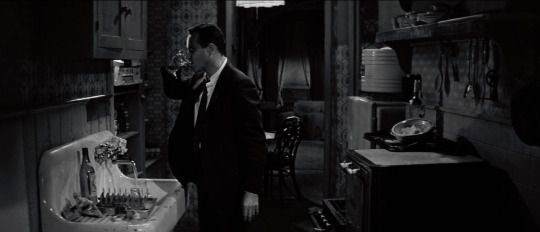
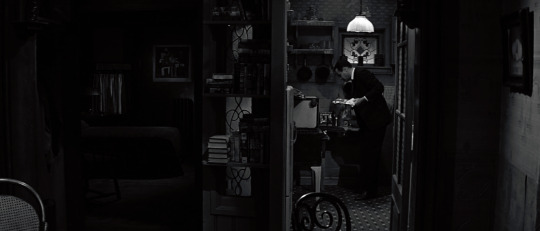








The Apartment | 1960
Director: Billy Wilder
Production designer: Alexandre Trauner / Set decorator: Edward G. Boyle
#the apartment#shirley maclaine#jack lemmon#billy wilder#architecture#production design#set design#interior design#interior and films#films#movies#cinematography#classicfilmsource#1960s movies#screencaps
264 notes
·
View notes